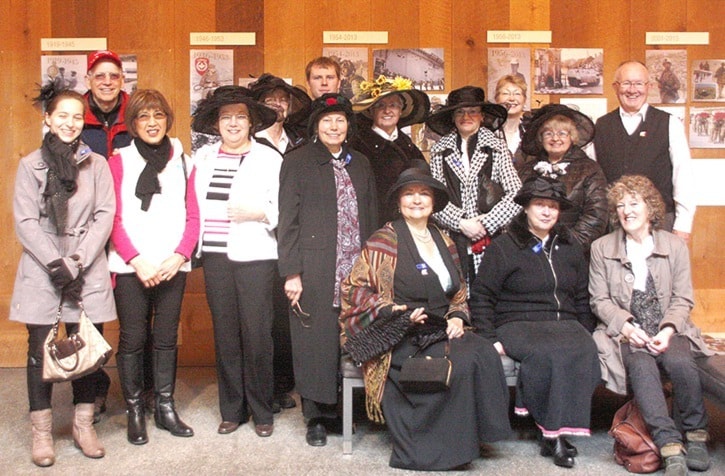Everyone has their own way of falling asleep.
Whether it be warm milk, white noise, rainfall or music, people use different strategies to catch some Z's.
For Terrace's Chantal Meijer, it's the deafening roar of a locomotive.
"We lived in those types of stations like the Kwinitsa Station when I was growing up," explained Meijer outside the Museum of Northern British Columbia last week.
"So I'm very familiar with trains rumbling by the station and rumbling me to sleep. We had such a unique way of life."
Meijer was in town with several other Terrace residents to be part of the Grand Trunk Pacific Railway's 100th anniversary tour of the last spike.
The railway historian of the group, Meijer joined other Terrace celebration committee members, city councillors and area enthusiasts as they boarded the train with the anniversary's special coaches last Monday night and arrived into Prince Rupert early Tuesday morning. It was all a part of Rail Travel Tours' two-week train trip running from Toronto, ON to Prince Rupert and back.
"I'm really doing this because of my father," said Meijer.
Richard Rinaldi was the Terrace foreman, and the last foreman at the Kwinitsa station.
Before her dad's passing in 2008, Meijer documented his 35 years of history as part of the "steel gangs".
Rinaldi worked nine months of the year from 1952 to 1987 in B.C., Alberta and Saskatchewan, and he came from France to do it. It was hard work with long days and involved blasting rubble and laying new track for Canadian National Railways (CNR).
"He told me that he worked 14-16 hour days and they worked many weeks where they could get a few days off. A few days off meant driving to Terrace to be with the family and spending just a day or two [with us]," said Meijer.
Rinaldi came to Kwinitsa from Paris, and his wife and three small children followed.
"It was quite a shock," said Meijer, who still speaks with the hint of a French accent.
"My dad started as a sectionman, but he progressed quite quickly to become program supervisor. He took a lot of pride in laying new steel and these gangs were very difficult to marshall. There was hundreds of men and heavy equipment and all the responsibility of the tracks. I have that part in me now that I've recorded his history."
Each year, Rinaldi would travel to Edmonton to do all the hiring and from there, CNR would issue his designation for the coming months. In the winter months, Rinaldi would be the foreman at Terrace.
In 1975, Rinaldi was away from home and Meijer was about to get married.
"He drove 22 hours from Red Deer, Alberta just to make it to the wedding and he only stopped once for half an hour so he wouldn't fall asleep at the wheel," said Meijer.
"He just made it and then he had to turn around and drive another 22 hours back to the gang, but he was not going to miss his daughter's wedding."
With the gangs, he was popular and he demanded the best.
"My dad had a reputation of being a real tough railroader. A lot of them came back to work for him who had worked for him in previous years and a lot of them were university students. They liked the pay. They got paid extra for the long hours and I think they also respected my dad," said Meijer.
"He was a soldier in the war and he ran the gangs with a sort of military precision. I think maybe his war experience in France helped him to marshall these gangs with a kind of iron fist."
Rinaldi had one top priority.
"I knew he was driven by love for family but he was also driven as a perfectionist to see that the trains did pass safely, and no man was injured year after year [on his watch]," said Meijer
"I asked him why did you do it dad, why did you spend all those years working outside so hard, and he said, 'I did it so the trains could pass safely'."
